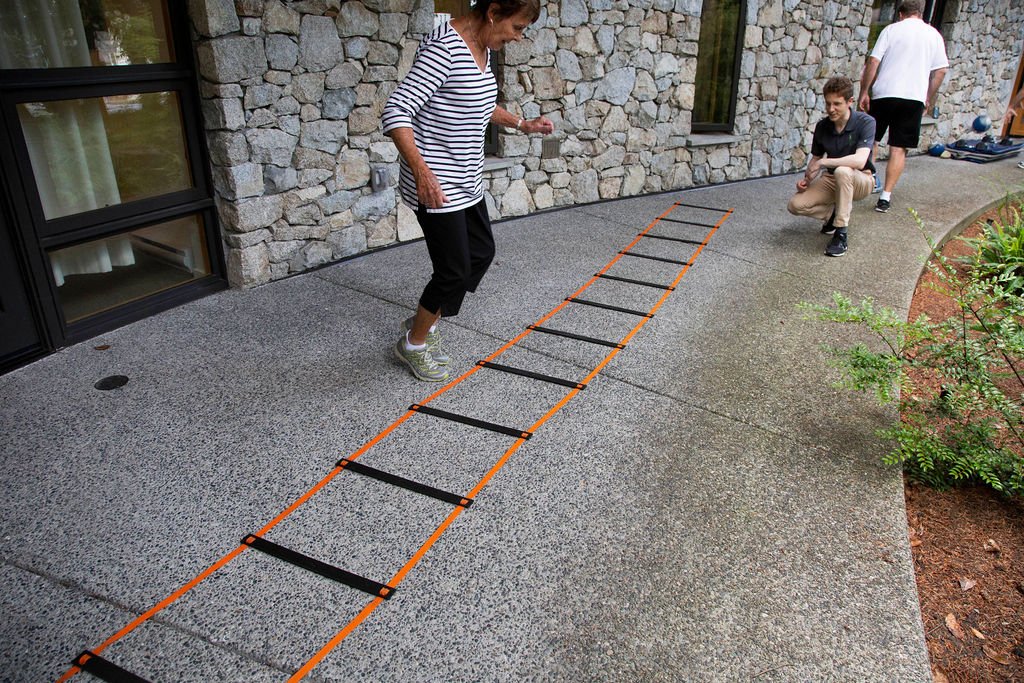Train Smarter, Not Harder: The Power of Zone 2 Training for Longevity
Many people think you need to train with an all-out effort to benefit from exercise. The truth is, you don’t always need to feel exhausted after a run or push hard to build endurance. In fact, adding Zone 2 (or moderate-intensity continuous heart rate training) into your routine is one of the best ways to improve your cardiovascular fitness, as well as your performance, and contribute towards longevity.
What is Heart Rate Training?
To understand Zone 2 and maximize the benefits of this form of exercise, let’s define what heart rate or ‘zone’ training is.
Training zones are the heart rate ranges that correspond to the intensity of your activity. Training zones classify your exercise into five different categories. Zone 1 is the easiest, around 55-65% of your max heart rate, and might be used for warming up, recovery, or an easy training day. Zone 5 is maximum intensity, 90% of your max heart rate and above. You might be in Zone 5 when you are in the last stretch of a race.
If you don’t have access to a lab-grade blood lactate test, the best way to maximize the accuracy of these percentages is to measure your heart rate when you are giving 100% maximal effort!
*If you are mostly sedentary or your doctor has recommended you should avoid maximal exertion, please consult a medical doctor before performing a maximal exertion test on your own.
What is Zone 2?
Zone 2 should feel like a 2 or 3 out of 10 effort or a pace that you can maintain a conversation at. This typically lines up with 65-75% of your maximum heart rate. This zone is often referred to as the aerobic zone.
Why is it important to incorporate Zone 2 training into your fitness routine?
Exercising in Zone 2 helps to lower your resting heart rate and increase your aerobic capacity. Zone 2 training/exercise/cardio has been shown to improve cardiovascular health, which can help prevent diseases such as heart disease and stroke. It can also improve metabolic health, which can help regulate blood sugar levels and improve insulin sensitivity. In a 2014 study researchers showed that endurance athletes had greater gains in VO2 Max - a gold standard test that measures your cardiovascular fitness level - when incorporating Zone 2 than when they limited their training programs to High-Intensity Interval Training (HIIT) and sprint training.
How do you know you’re in Zone 2?
This is where your fitbit, Apple watch, or other heart rate monitors will come in handy. They may each have a different setup to track Zone 2, so make sure you check your settings.
Another indicator - when you are training at Zone 2, you can sustain the effort for a longer time. An example of a Zone 2 workout is a jog where you can still have a conversation with your workout partner.
For optimal results, you should be training in Zone 2 for a minimum 45-minute duration for each workout and aiming for over 150 minutes of Zone 2 training per week.
“I’m passionate about educating my patients on Zone 2 because of the direct positive impact we see in their metabolic health, cardiovascular health, and how it promotes an active lifestyle. The way I recommend most people do Zone 2 is biking as it’s easy to maintain a steady pace. However, I am a big fan of rucking, walking with walking poles, or going on a hike with my family.”
Common Training Error: Pushing Too Hard
It’s important to listen to your body and not push yourself too hard. Remember, the goal of Zone 2 training is to maintain a consistent intensity level, not to push yourself to exhaustion.
Zone 2 is a moderate-intensity zone, not a high-intensity one. The hardest part of Zone 2 training might be slowing down your workouts. If you are a runner, you may want to mix running with walking to stay in your Zone 2 threshold. This is all part of committing to Zone 2 training!
How to Zone 2
If you are looking for different ways to incorporate Zone 2 training into your exercise routine, try:
Walking with walking poles
Rucking (walking with a weighted backpack)
Steady-state biking
Low-intensity jogging
Hiking
Fast-paced walking with your dog, a friend, or a great playlist
Rollerblading (if you're into that)
The key is to find an activity that you enjoy and can sustain for a longer period of time (at least 45 minutes per session). By exercising in this zone, you can improve your cardiovascular and metabolic health while also building endurance, ultimately helping you live a longer, healthier life.
To learn more about Zone 2, VO2 Max testing, Lactate testing, and Tall Tree’s approach to longevity medicine, visit our Longevity Medicine program page or reach out to our team, and we’ll be happy to answer your questions.



















